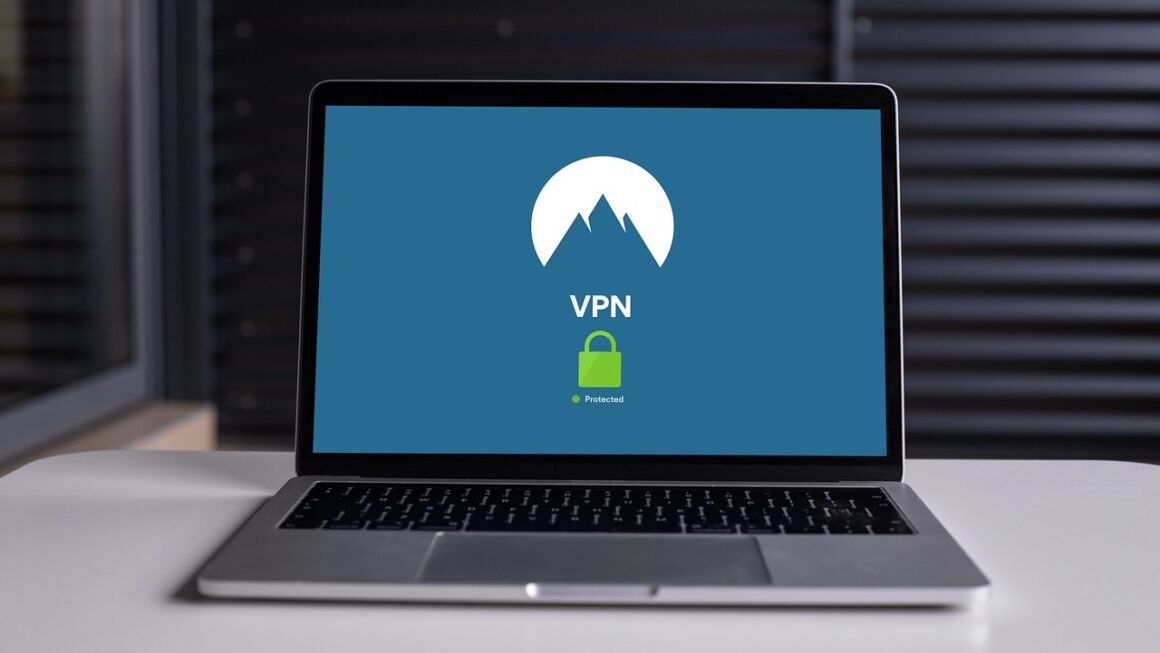Penetration testing, often called “pen testing,” is a critical component of modern cybersecurity. It’s like hiring ethical hackers to break into your system before malicious actors do. By simulating real-world cyberattacks, penetration tests identify vulnerabilities and weaknesses in your systems, applications, and networks, allowing you to proactively strengthen your defenses and protect sensitive data. This blog post will delve into the intricacies of penetration testing, exploring its methodologies, benefits, and practical applications.
What is Penetration Testing?
Defining Penetration Testing
Penetration testing is a simulated cyberattack against your computer system to check for exploitable vulnerabilities. Think of it as a controlled security assessment that mimics the techniques a hacker might use. The objective is to identify vulnerabilities before they can be exploited by attackers.
- Active Testing: Penetration testing involves actively probing the system to find weaknesses.
- Simulated Attacks: The tests simulate various attack vectors, from malware and phishing to social engineering.
- Vulnerability Identification: The primary goal is to uncover vulnerabilities in systems, networks, and applications.
- Remediation Recommendations: A good penetration test doesn’t just find problems; it also provides recommendations for fixing them.
Why is Penetration Testing Important?
In today’s threat landscape, penetration testing is more crucial than ever. The Verizon 2023 Data Breach Investigations Report found that 83% of breaches involved external actors. Proactive security measures like pen testing can significantly reduce your risk.
- Identify Security Weaknesses: Find vulnerabilities before malicious actors do.
- Compliance Requirements: Many regulations (e.g., PCI DSS, HIPAA, GDPR) require regular penetration testing.
- Protect Sensitive Data: Prevents data breaches and safeguards sensitive information.
- Improve Security Posture: Enhances overall security by providing actionable insights.
- Test Incident Response: Evaluate the effectiveness of your incident response plan.
- Avoid Financial Losses: Prevent costly data breaches and fines.
Types of Penetration Testing
Black Box Testing
Black box testing, also known as zero-knowledge testing, is where the penetration tester has no prior knowledge of the system being tested. They operate as if they were an external attacker, starting from scratch. This is the most realistic type of test.
- Real-world Simulation: Closely mirrors the experience of an actual attacker.
- Time-Consuming: Can take longer due to the need to discover information.
- Comprehensive Assessment: Uncovers vulnerabilities that might be missed with prior knowledge.
- Example: Testing a website without any knowledge of its underlying code or infrastructure.
White Box Testing
White box testing, also known as clear-box or glass-box testing, provides the penetration tester with complete knowledge of the system, including source code, network diagrams, and credentials. This allows for a very thorough and efficient assessment.
- In-Depth Analysis: Allows for a more detailed examination of the system.
- Faster Testing: Testers can quickly identify and exploit vulnerabilities.
- Developer Collaboration: Facilitates collaboration between testers and developers for remediation.
- Example: Testing a web application with full access to the source code and database schema.
Gray Box Testing
Gray box testing offers a middle ground between black box and white box testing. The penetration tester has partial knowledge of the system, such as user credentials or network architecture. This is a popular choice, offering a balance between realism and efficiency.
- Balanced Approach: Provides a good balance between real-world simulation and in-depth analysis.
- Efficient Vulnerability Discovery: Faster than black box testing, but more realistic than white box testing.
- Targeted Testing: Allows testers to focus on specific areas of concern.
- Example: Testing a web application with access to user accounts but not the source code.
Penetration Testing Methodologies
Reconnaissance
Reconnaissance is the initial phase of penetration testing, where the tester gathers information about the target system. This information can include IP addresses, domain names, network topology, and employee information.
- Passive Reconnaissance: Gathering publicly available information without directly interacting with the target system (e.g., using search engines, social media, and DNS records). Example: Using Shodan to discover publicly accessible devices.
- Active Reconnaissance: Interacting with the target system to gather more information (e.g., network scanning, port scanning, and service enumeration). Example: Using Nmap to scan a network for open ports.
Scanning
The scanning phase involves using tools to identify open ports, services, and vulnerabilities on the target system. This helps to narrow down the attack surface and identify potential entry points.
- Port Scanning: Identifying open ports on a system to determine available services. Tools like Nmap are commonly used.
- Vulnerability Scanning: Using automated tools to identify known vulnerabilities in the system. Nessus and OpenVAS are popular vulnerability scanners.
- Network Mapping: Creating a visual representation of the network topology to understand the relationships between systems.
Exploitation
Exploitation is the phase where the penetration tester attempts to exploit the identified vulnerabilities to gain unauthorized access to the system. This may involve using various techniques, such as buffer overflows, SQL injection, or cross-site scripting (XSS).
- Proof of Concept (PoC): Demonstrating that a vulnerability can be exploited by successfully gaining access to the system.
- Privilege Escalation: Attempting to gain higher-level access to the system, such as administrator or root privileges. Example: Exploiting a vulnerability to gain root access on a Linux server.
- Post-Exploitation: Maintaining access to the system and gathering further information. Example: Installing a backdoor for persistent access.
Reporting
The final phase of penetration testing involves creating a detailed report that documents the findings of the test. The report should include a summary of the vulnerabilities identified, the impact of each vulnerability, and recommendations for remediation.
- Executive Summary: A high-level overview of the findings for non-technical stakeholders.
- Technical Details: A detailed description of each vulnerability, including the steps to reproduce the vulnerability and the recommended remediation steps.
- Risk Assessment: An assessment of the risk associated with each vulnerability, based on the likelihood of exploitation and the potential impact.
- Remediation Recommendations: Specific recommendations for fixing the identified vulnerabilities. This should be actionable and prioritized based on risk.
Tools Used in Penetration Testing
Network Scanning Tools
Network scanning tools are essential for discovering hosts, services, and open ports on a network. They help to map the network and identify potential attack vectors.
- Nmap: A versatile and widely used network scanner that can be used for host discovery, port scanning, and service enumeration.
- Zenmap: The official GUI for Nmap, providing a user-friendly interface for network scanning.
- Angry IP Scanner: A lightweight and fast IP address and port scanner.
Vulnerability Scanners
Vulnerability scanners automate the process of identifying known vulnerabilities in systems and applications. They compare the system’s configuration against a database of known vulnerabilities.
- Nessus: A popular commercial vulnerability scanner with a comprehensive database of vulnerabilities.
- OpenVAS: An open-source vulnerability scanner that provides similar functionality to Nessus.
- Nikto: A web server scanner that checks for common web server vulnerabilities.
Web Application Testing Tools
Web application testing tools are specifically designed for identifying vulnerabilities in web applications, such as SQL injection, XSS, and CSRF.
- Burp Suite: A comprehensive web application security testing platform with a wide range of features, including proxying, scanning, and fuzzing.
- OWASP ZAP: A free and open-source web application security scanner.
- SQLMap: An automated SQL injection tool.
Exploitation Frameworks
Exploitation frameworks provide a platform for developing and executing exploits against identified vulnerabilities. They simplify the process of exploiting vulnerabilities and gaining access to systems.
- Metasploit: A powerful exploitation framework that provides a wide range of exploits, payloads, and post-exploitation modules.
- Cobalt Strike: A commercial penetration testing platform that focuses on post-exploitation and team collaboration.
Best Practices for Penetration Testing
Define the Scope
Clearly define the scope of the penetration test, including the systems and applications that will be tested, the types of tests that will be performed, and the goals of the test.
- In-Scope Systems: Specify which systems and applications are included in the test.
- Out-of-Scope Systems: Clearly identify any systems or applications that are excluded from the test to avoid unintended consequences.
- Testing Objectives: Define the specific goals of the penetration test, such as identifying vulnerabilities, testing security controls, or evaluating incident response capabilities.
Obtain Authorization
Obtain written authorization from the system owner before conducting any penetration testing activities. This authorization should specify the scope of the test, the dates and times of the test, and any limitations on the testing activities.
- Legal Compliance: Ensures that the penetration test is conducted legally and ethically.
- Avoid Legal Ramifications: Protects the tester from potential legal issues.
- Clear Communication: Establishes clear communication and expectations between the tester and the system owner.
Protect Sensitive Data
Take steps to protect sensitive data during the penetration test, such as masking or encrypting sensitive data, and limiting access to sensitive data to authorized personnel.
- Data Masking: Masking or redacting sensitive data to prevent unauthorized disclosure.
- Encryption: Encrypting sensitive data to protect it from unauthorized access.
- Access Control: Limiting access to sensitive data to authorized personnel.
Communicate Regularly
Maintain regular communication with the system owner throughout the penetration test, providing updates on the progress of the test and any significant findings. This allows for proactive management of any issues that arise during the test.
- Status Updates: Provide regular updates on the progress of the test.
- Significant Findings: Communicate any significant findings to the system owner as soon as possible.
- Collaboration: Foster collaboration between the tester and the system owner.
Remediate Vulnerabilities
Take steps to remediate any vulnerabilities identified during the penetration test as soon as possible. Prioritize remediation based on the risk associated with each vulnerability.
- Prioritize Remediation: Prioritize remediation based on the risk associated with each vulnerability.
- Implement Fixes: Implement appropriate fixes to address the identified vulnerabilities.
- Re-test: Re-test the system after implementing fixes to ensure that the vulnerabilities have been successfully remediated.
Conclusion
Penetration testing is an indispensable part of a robust cybersecurity strategy. By proactively identifying and addressing vulnerabilities, organizations can significantly reduce their risk of data breaches and other cyberattacks. Understanding the different types of penetration testing, methodologies, tools, and best practices is crucial for implementing an effective penetration testing program. Regular penetration tests, coupled with prompt remediation efforts, will bolster your defenses and keep your sensitive data safe in an increasingly hostile digital landscape. It’s not just a good idea; it’s a necessity for protecting your organization in today’s world.



